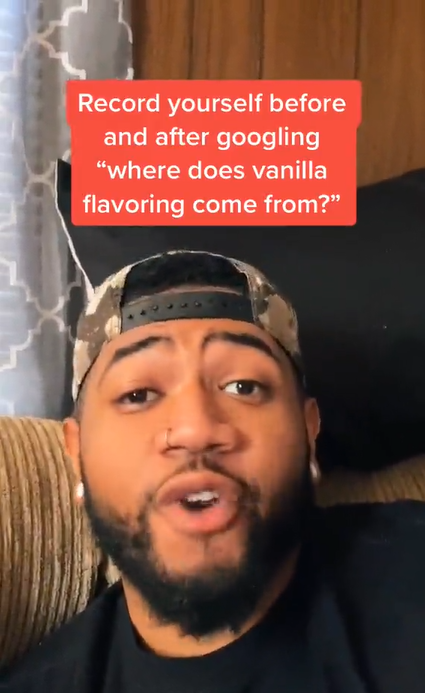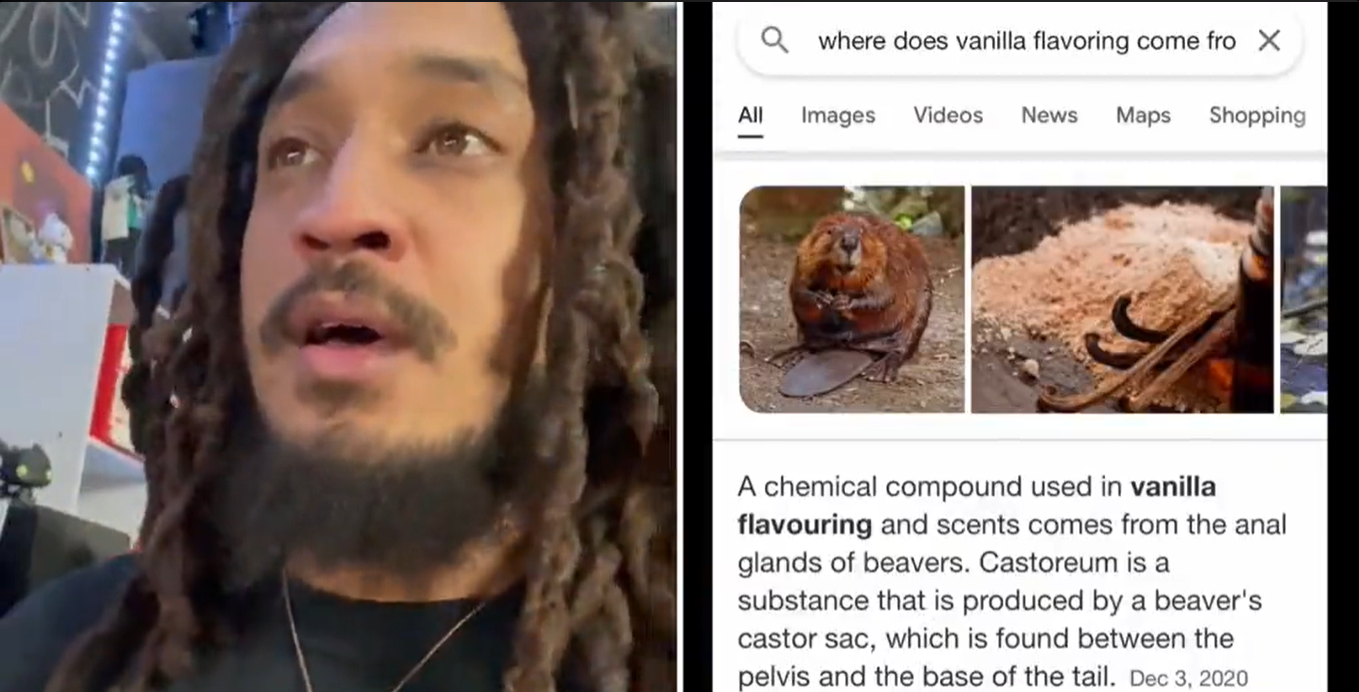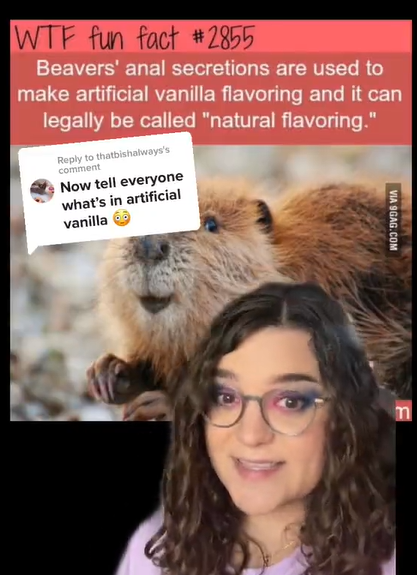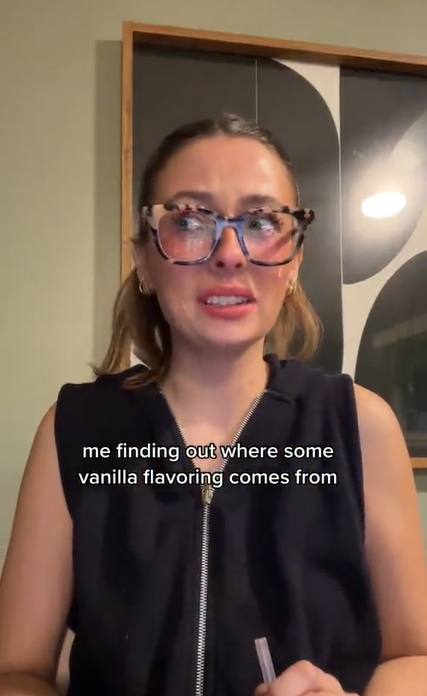Searching “where does vanilla flavoring come from” has popped up on TikTok multiple times over the years, with the most common Google result being…beaver butts. But it’s a bit more complicated than that, as this is largely outdated information and most vanilla flavor these days is purely artificial.


What’s up with the ‘Where does vanilla flavoring come from?’ TikToks
Every couple of years, TikTokers start searching “Where does vanilla flavoring come from?” on Google and recording reaction videos when they learn the answer is beaver butts.

This Google search result is a bit outdated, even if it does make for some entertaining TikTok reaction videos and memes.
@officialpatrickcloud Did yall know where vanilla flavoring comes from?? 👀😩 #LookUpPat ♬ original sound – Patrick Cloud
The history of where vanilla flavoring comes from
The Smithsonian’s article in November 2023 debunking this widespread social media rumor about where vanilla flavoring comes from said that while “beavers do excrete sweet-smelling (and edible) castoreum from sacs near their anuses—experts say you probably can’t find this goo on the shelves of your nearest grocery store.”
Michelle Francl, a chemist at Bryn Mawr College who studies the science of food, told National Geographic in a 2023 interview, “It turns out that the stuff is incredibly expensive, because it’s rare; there’s no way it’s in your ice cream.”
That being said, there is a history of vanilla flavoring coming from beaver butts; however, that isn’t entirely accurate in itself, as castoreum, the flavor in question, specifically comes from the beaver’s castor sacs near their anal glands, according to flavor historian Nadia Berenstein.
In her Vice article from December 2018, she wrote that “if [castoreum] was being used in flavorings, I knew there was only one reason for it: It must be delicious. I also knew, from conversations I’d had with people who work in the flavor industry, that it was increasingly rare.”
She went on to explain, “Humans have a long history of consuming castoreum. Since antiquity, it’s been hailed as a powerful medicine, a treatment for everything from epilepsy to constipation to spider bites. Roman women inhaled the fumes of smoldering castoreum in an attempt to induce abortions. Francis Bacon, the 16th-century English polymath, recommended snorting a bit of powdered castoreum as a cure for brain-fog.”

Where vanilla flavoring comes from in the present day
These days, fortunately, castoreum is seen as more of a luxury ingredient—or scent, in the case of perfumes—and is rarely used in foods. Two major factors play into this: one, it is significantly cheaper to manufacture artificial flavorings than it is to cultivate them naturally, which also leads to a consistent flavor so consumers are always getting what they expect.
The other reason for using artificial flavoring vanilla rather than extracting it from beavers’ castor sacs? Castoreum isn’t kosher, and that label is a very important one for food production if brands want rabbinic approval of their products.
Reaction videos
While the likelihood of having had castoreum in your food is very low, the reaction videos to the history of vanilla flavoring can certainly be amusing. Here are some folks learning about the origins of vanilla flavoring and the comments on their videos.
@sloowmoee @shaylanmarieee ♬ original sound – Moses Cox


@allicattt IS THIS REAL CUZ????😐 (ps i’m finna go live) (psps don’t ask me if finna is a word cuz it is today)
♬ Favorite Dress P1 – ja’marie🦋



@mariannenafsu #stitch with @sloowmoee this can’t be true please tell me this isn’t true #foryou #vanilla #fyp #foryoupage #4u #thetea ♬ original sound – Marianne
TikToker Rachel Stonecraft (@hyperfocuspod) took the time to debunk this rumor on her TIkTok account, sharing the history and origins of vanilla flavor alternatives.
@hyperfocuspod Reply to @thatbishalways #greenscreen Anyone want some beaver 🍑? #fyp #PepsiApplePieChallenge #hyperfocus #vanilla #vanillin #sciencetok #flavorchemistry #beavers ♬ FEEL THE GROOVE – Queens Road, Fabian Graetz


